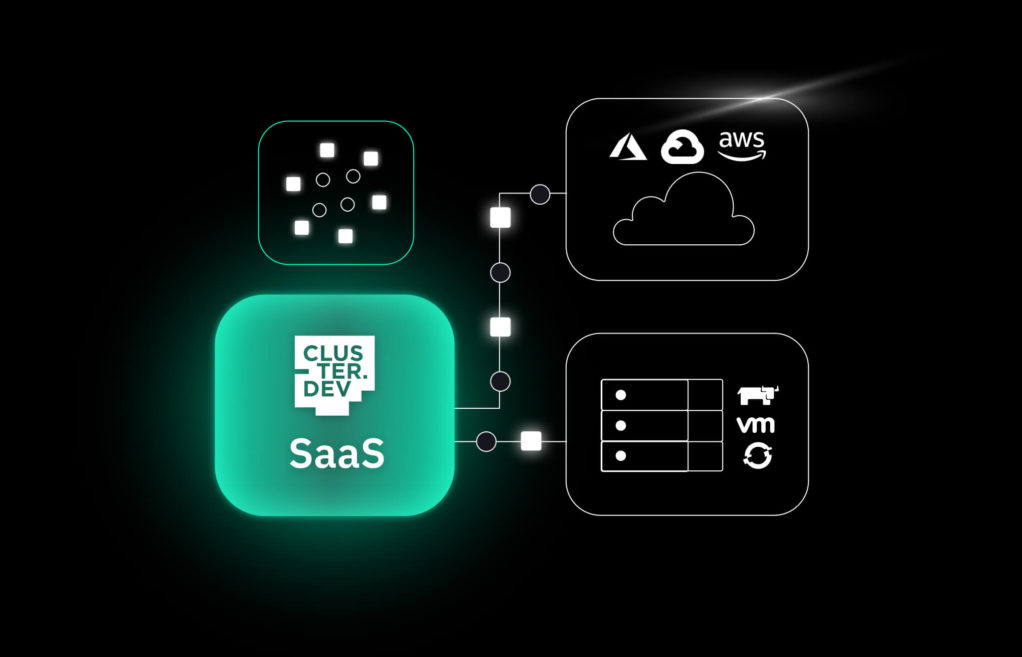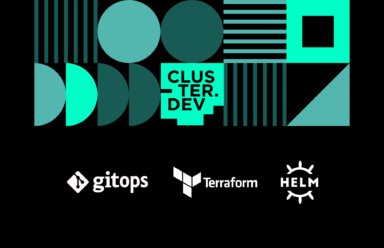Why Cluster.dev?
In the dynamic realm of business operations, efficiency and streamlined processes are paramount. One significant development in this area from the open source community is Cluster.dev, a software infrastructure management tool. Cluster.dev’s rich functionality allows businesses to successfully address deployment and operational challenges, resulting in the overall enhancement of IT processes within a company.
In this article we’ll explain how businesses can significantly benefit from using Cluster.dev, highlight the problems it addresses, and the practical benefits it offers users upon implementation.
Purpose
Cluster.dev has its roots in an in-house project at SHALB, the DevOps development and consulting company. The product was initially devised to resolve inherent challenges within the company, such as streamlining infrastructure deployments, implementing seamless changes across environments, and establishing effective reference patterns for cross-team knowledge sharing. Encouraged by successful results, the decision was made to open-source the solution.
At its core, Cluster.dev seeks to integrate formerly isolated infrastructure components. This integration aims to describe and deploy an entire infrastructure using a singular tool and its efficacy relies on a precise inner structure and an embedded templating engine. Leveraging units as foundational building blocks, it excels in executing infrastructure patterns and harmonizing them within a high-level project abstraction.
Based on a number of technology best practices, Cluster.dev champions efficient infrastructure management methodologies such as IaC, GitOps, and secure handling of sensitive information. Not only that, but its compatibility with existing stacks simplifies the onboarding process. The software enables the seamless importation of Terraform repos, modules, Kubernetes manifests, and other infrastructure tools, resulting in smooth connection and management.
Who is it for?
The primary target audience for Cluster.dev encompasses infrastructure teams with a requisite level of expertise. Its value lies in simplifying their day-to-day tasks: from creating clusters and deploying services to launching environments and fostering knowledge sharing among development teams. The software tool particularly shines in companies with rapidly evolving infrastructures that frequently encounter component dependency and interrelation issues—issues that are typical in fast-growing startups involved in full-cycle development.
Distinguishing Features
Cluster.dev boasts unparalleled capabilities, meaning that for many businesses it has now become indispensable. Its advantages over in-house scripts lie in its elegance, reliability, component coherence, and rapid implementation. Unlike scripts necessitating continuous testing, maintenance, and updates, Cluster.dev offers a comprehensive automation solution. It consolidates system components within a reusable infrastructure pattern, resulting in easy replication and testing against new changes. As a GitOps tool, it maintains infrastructure state in a Git repository, ensuring well-documented changes and preserved knowledge.
Cluster.dev is an infrastructure automation tool, designed to describe and deploy a whole infrastructure as a single set — the kind of thing that is hard to achieve with other tools because of their inner limitations. Since Cluster.dev maintains automated deployment of tools in chain order, it enables users to launch an entire system in one go.
Cluster.dev vs Terraform (TF)
Cluster.dev works in tandem with Terraform as an infrastructure building block. Rather than substituting Terraform, it complements it by overcoming certain limitations, notably in templating. While the lack of templating options for Terraform files often leads to temporary solutions, Cluster.dev’s powerful capabilities allow comprehensive templating, including Terraform code.
Additionally, Cluster.dev resolves Terraform challenges concerning provider definitions for Kubernetes or Helm within the same codebase. It does this by deploying your tools in a chain order, thereby relieving you of the necessity to remember the scheme of their deployment and allowing for the launch of an entire system in one go.
Business Value
From a business perspective, adopting Cluster.dev yields significant benefits. It expedites product time-to-market by streamlining infrastructure processes, facilitating new environment launches, feature testing, and efficient deployments. The end result is increased productivity among SRE and product teams which positively influences the product development lifecycle.
Of course, embracing Cluster.dev also mitigates the risk of vendor lock-in. Its foundation on open-source technologies, coupled with seamless export to plain Terraform code, ensures smooth transitions without the need to recreate the entire infrastructure when switching tools.
Conclusion
Cluster.dev parallels Kubernetes’ role in consolidating containers for infrastructure components. It’s not a revolutionary solution but one that incorporates a harmonious blend of proven DevOps tools and practices—such as IaC, Terraform, and templating. Its innovation lies in integrating these technologies seamlessly to offer a unified solution for efficient infrastructure management in businesses.
 Schedule call
Schedule call


